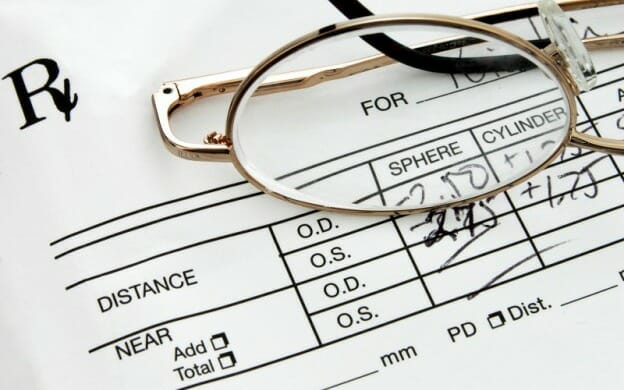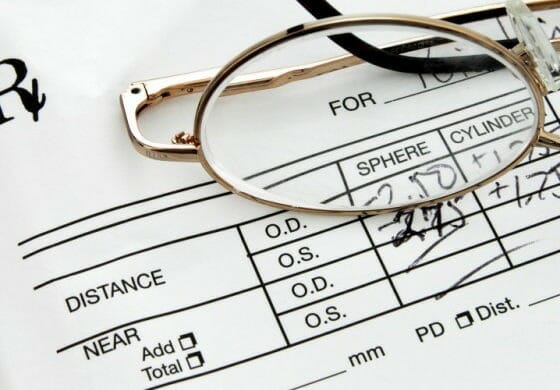Understanding Your Eyeglass Prescription

It’s a very good idea for anyone who wears glasses to have a copy of their eyeglass prescription handy. This is, of course, just in case it ever becomes necessary to replace a pair of glasses in a hurry. While some people accomplish this by scanning their prescription and storing it on a computer or tablet, others may keep it on a thumbdrive, carrying it around in a purse. No matter what method of storage you use, just remember to always keep your eyeglass prescription handy whenever you plan to travel.
But in the end, some of us will still want to know about the prescription itself, and how best to read it. After all, what do all of those numbers, abbreviations, and symbols really mean? In this post, we will talk about how to properly read an eyeglass prescription.
Starting With a Sample Eyeglass Prescription
The best way to start understanding how to read an eyeglass prescription is by looking at an example. Consider this prescription:
OD -1.75
OS -200
PD: 64
The above abbreviation OD stands for oculus dexter, which refers to the right eye. OS is short for oculus sinister, and indicates the left eye. Some prescriptions use the abbreviation OU, which stands for the Latin phrase, oculi uterque, meaning both eyes. PD stands for pupilary distance, which is the distance between a set of pupils. For an eyeglass prescription, the PD is a necessary measurement to have.
In the example, the negative numbers refer to the ″sphere″ portion of the prescription, and indicate that the patient is nearsighted. Sometimes there will be more numbers, indicating that the patient needs adjustment to the cylinder. Patients with astigmatism require these additional adjustments.
Some prescriptions include a number next to the abbreviation, ADD, which means additional. This is for older patients who have presbyopia and need extra magnification added to the lower portion of their lenses. This number is always positive, and results in bifocal lenses. The ADD number will often be different for each eye.
Differences in Contact Lens Prescriptions
A contact lens prescription is a bit different, as it must also include information about the physical eye. These prescriptions include a measurement for the base curve of the back portion of the lens, diameter of the lens, and the manufacturer/brand name of the lenses.
After each new prescription, patients have the right to a copy of their information. In fact, this is a law adopted from the FTC’s Prescription Release Rule in 1980. The law requires eye doctors to provide the prescription upon the completion of any exam that includes a refraction; a refraction determines the lens powers needed to best improve vision. This is the test during which the doctor flips a succession of lenses in front of the patient’s eyes.
If a doctor fails to provide a prescription for his patient, he or she is subject to a fine of $10,000. Note that some will not include the pupilary distance (PD) number on the prescription, and this number is very important when purchasing eyeglasses.
Maintaining Optimal Eye Health
Eye health is vital for effectively operating in the world, and learning a bit about your eyeglass prescription can help with understanding an important document. Given that doctors often have less-than-exemplary handwriting, knowing what to expect on a prescription pad can be very helpful.
It is also helpful to know what is needed on the prescription, including the pupilary distance. If anything is left off of the prescription, be sure to contact your eye doctor to have all of the pertinent information before traveling, or going to another eyeglass vendor for service.
[Photo Via: Vision Source]

